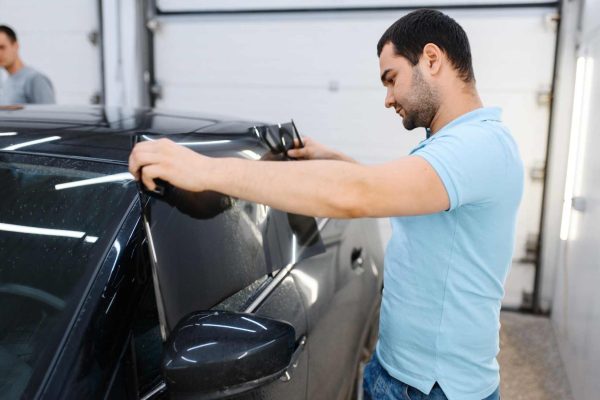Window tinting is a popular choice for many vehicle owners, offering numerous benefits such as increased privacy, reduced glare, improved comfort, and UV protection. However, before you dive into the world of window tinting, there are several important considerations to keep in mind. In this comprehensive guide, we’ll explore the key factors you should consider when getting window tinting done.
Table of Contents
1. Local Tinting Regulations
Before you decide on a window tint, it’s crucial to understand your local regulations regarding tint darkness levels and reflectivity. Different states and countries have specific laws in place to ensure safe driving and visibility. Knowing and adhering to these regulations will save you from potential fines and legal issues down the road.
2. Type of Tint Film
There are various types of window tint films available, each with its unique characteristics and price points. Here are some common types:
- Dyed Film: Offers an affordable option with heat reduction and a dark appearance, but it may fade over time.
- Metallic Film: Provides excellent heat reduction, UV protection, and durability, but it can interfere with electronic signals.
- Carbon Film: Offers good heat and UV rejection, a matte finish, and enhanced aesthetics.
- Ceramic Film: Provides superior heat reduction, UV protection, and clarity without interfering with electronics. It’s usually more expensive due to its quality.
- Hybrid Film: Combines elements of metallic and dyed films, offering a balance between performance and cost.
Choose the type of film that best suits your preferences, budget, and the climate in which you live.
3. VLT (Visible Light Transmission) Percentage
VLT refers to the amount of visible light that can pass through the tinted windows. Different windows (front, rear, and side) may have varying VLT percentage limits based on local regulations. A lower VLT percentage means darker tint. Consider your visibility needs, local regulations, and how dark you’re comfortable with when choosing the VLT percentage.
4. Professional Installation
While DIY tinting kits are available, it’s highly recommended to opt for professional installation. Professional installers have the experience and tools needed to ensure a precise, bubble-free application. They can also advise you on the best type of tint for your specific needs and ensure compliance with local laws.
5. Long-Term Cost vs. Benefits
Think beyond the initial cost of window tinting. Consider the long-term benefits such as reduced energy consumption (as your car stays cooler, you use the air conditioner less), protection against UV rays (which can damage your skin and the interior of your vehicle), and enhanced privacy and comfort. These advantages can save you money and improve your driving experience over time.
6. Maintenance and Warranty
Proper maintenance is essential to prolong the life and performance of your window tint. Avoid cleaning the interior surface for at least a week after installation to allow the adhesive to cure fully. Additionally, inquire about the warranty provided by the tinting manufacturer or installer. Many reputable installers offer lifetime warranties, providing peace of mind and assurance of quality.
Conclusion
Getting window tinting done is a decision that requires careful consideration of various factors, from local regulations to the type of film and professional installation. Turbo Tint Orlando is your trusted partner for top-quality window tinting services, backed by a lifetime warranty. Enhance your driving experience with the perfect window tint. Contact Turbo Tint Orlando today and make an informed choice for your window tinting needs.




